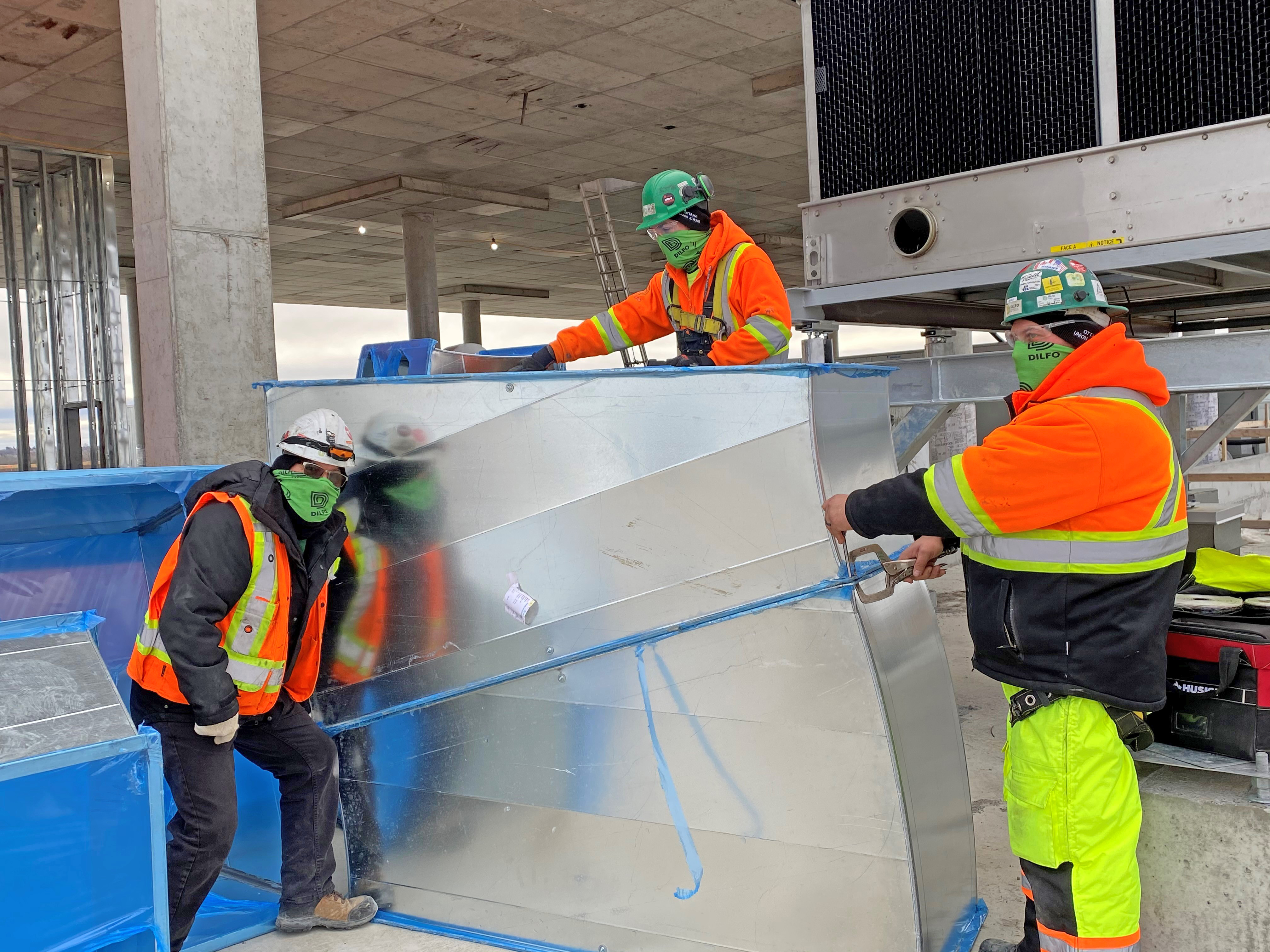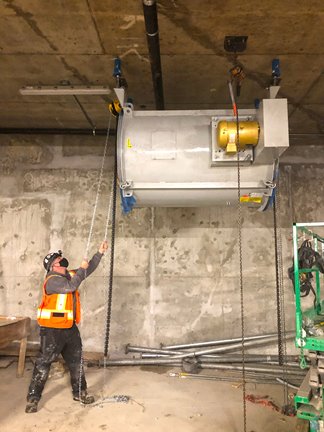
Just as the global pandemic has caused massive disruptions in daily life and the economy of the United States, COVID-19 hasn’t spared our neighbors to the north, either.
As of the middle of December, official government statistics put the total number of coronavirus cases in 2020 at nearly 470,000 across Canada. The total number of deaths attributed to the virus was approaching 14,000 as the year drew to a close. The economic turbulence included an 11 percent decline in in the country’s real gross domestic product for the month of April, the early days of the crisis.
How are Canadian sheet metal and HVAC contractors handling the COVID-19 fallout? We checked in with SMACNA members from across the country to talk about some of the key issues that have emerged in the industry this year. We also discussed what they will be monitoring in the months ahead.
Early Days
The World Health Organization on March 11 declared COVID-19 a global pandemic. The Canadian government reacted quickly by implementing mitigating measures across the country. Not surprisingly, some contractors report that the market for their services dried up almost immediately in the short run.
Danny Dillon, president and CEO of Ottawa-based sheet metal and HVAC company DILFO Mechanical, notes that contractors in his company’s area had no choice but to put a halt to their operations at the time.
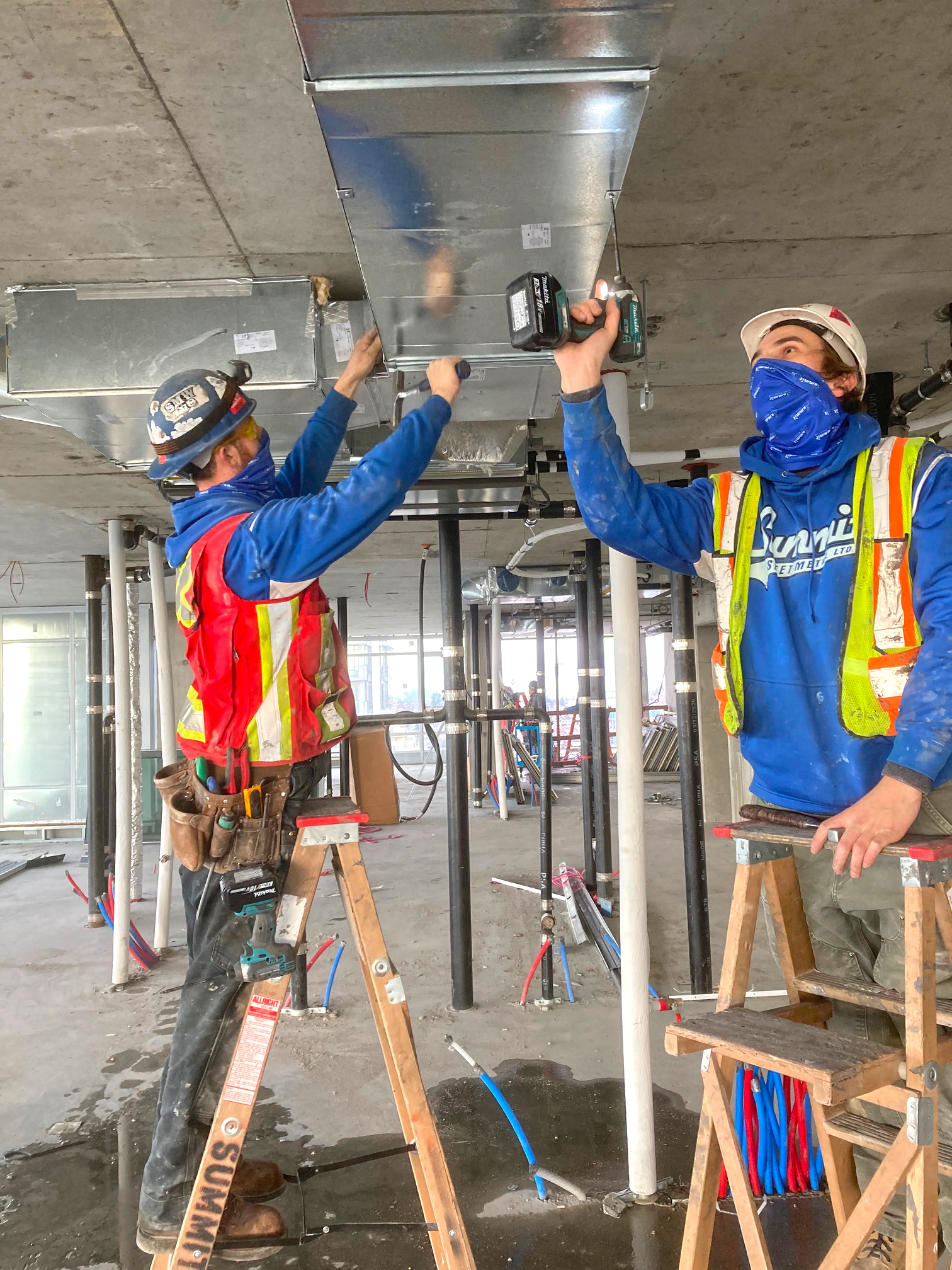
Summit Sheet Metal workers install ductwork onsite. Demand for ventilation systems has increased for the contractor in the wake of COVID-19.
“When COVID first hit in March, everyone slowed down or stopped at most sites due to either federal or provincial government requests,” Dillon says. “The city was actually shut down.”
The Canadian government enacted relief programs for workers affected by the pandemic that were generally more robust and simpler to access than what was available in the U.S. Contractors say the government benefits helped their workforces get through the early stages. Importantly, the Canadian Economic Recovery Benefit (CERB) program allowed citizens to apply for a $2,000 payment to cover a four-week period. The payments were deposited directly in the bank accounts of workers within a matter of days after submitting their applications.
The CERB was available to workers as young as 15 years old who saw their employment status impacted by Covid-19. Phil McDonald, a project manager at Summit Sheet Metal Ltd., notes that the CERB enabled his company to maintain payments to employees while temporarily dropping the number of its onsite employees from 60 to 24.
Other measures included expanding employment insurance, providing rent subsidies and offering income support for workers who became sick or forced to self-isolate due to Covid-19. In a move to avoid layoffs and encourage rehiring, Canadian businesses could apply for wage subsidies.
Back in Business
The idle work sites around the country didn’t last for long. Within weeks, the Canadian government issued guidance on services “considered essential to preserving life, health and basic societal functioning” in the country. Once construction was deemed essential, business picked up in the contracting sector just as quickly as it slowed down.
In fact, overall demand this year for Summit’s services has been “absolutely insane,” said McDonald. Operating out of British Columbia, Summit specializes in installing ventilation systems in residential towers.
“We were expecting a lot of customers to drop out, but that was not the case,” McDonald says. “It is busier now for us than it was before COVID hit.”
Ryan Warner of Duncan’s Limited, a mechanical contracting and custom metal company operating in the Yukon Territory, speculates that customers’ extra time around the house in isolation from the virus actually gave the company a boost. He says Duncan’s has experienced a dramatic spike in demand for fabrication orders from homeowners. These include custom build projects such as backyard fire pits or artistic metal cutouts.
“The uptick in people starting home renovations while they were at home or on lockdown increased that side of our business,” Warner observes.
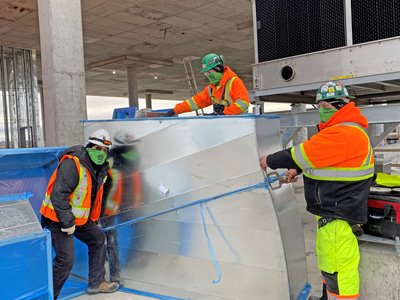
DILFO sheet metal workers install a medium pressure duct main for the office headquarters of a new high-tech company in Ottawa, Ont.
Safety Measures in Effect
Of course, Canadian contractors have found themselves operating in a vastly different environment this year.
Concerns for keeping workers safe popped up immediately across Canada once contractors got back to work. “We spent a lot of our time trying to do as much research as possible and come out with some company-wide protocols,” McDonald says.
At Alberta-based Crosstown Heating & Ventilating (Calgary) Ltd., for instance, safety advisor Tarah McLean began developing rigorous standards and policies for both job sites and the company’s in-house sheet metal fabrication facility. “From the beginning, we have taken a very aggressive approach with regard to Crosstown’s day-to-day operations,” she notes.
When possible, some contractors are dividing their workers into multiple crews. That creates more space on job sites. Moreover, it allows for some redundancy in case members of one team are exposed to the virus.
“We split shifts with our crew so that we were open seven days a week, instead of five, but only at half capacity in the shop,” Warner says.
Some of the common issues that emerged for all contractors included screening for COVID-19 symptoms, ensuring adequate distancing for workers and handling exposures to the virus on job sites. Contractors also began snapping up personal protective equipment to be used in the field.
McLean worked in consultation with local labor leaders and healthcare experts to come up with in-depth checklists and guidance to ensure that the company maintained COVID-free job sites. Laborers undergo temperature checks when they show up for work, for instance. “We’re on a really strict hygienic protocol in our shop and office, and everybody’s on board with it,” McLean says.
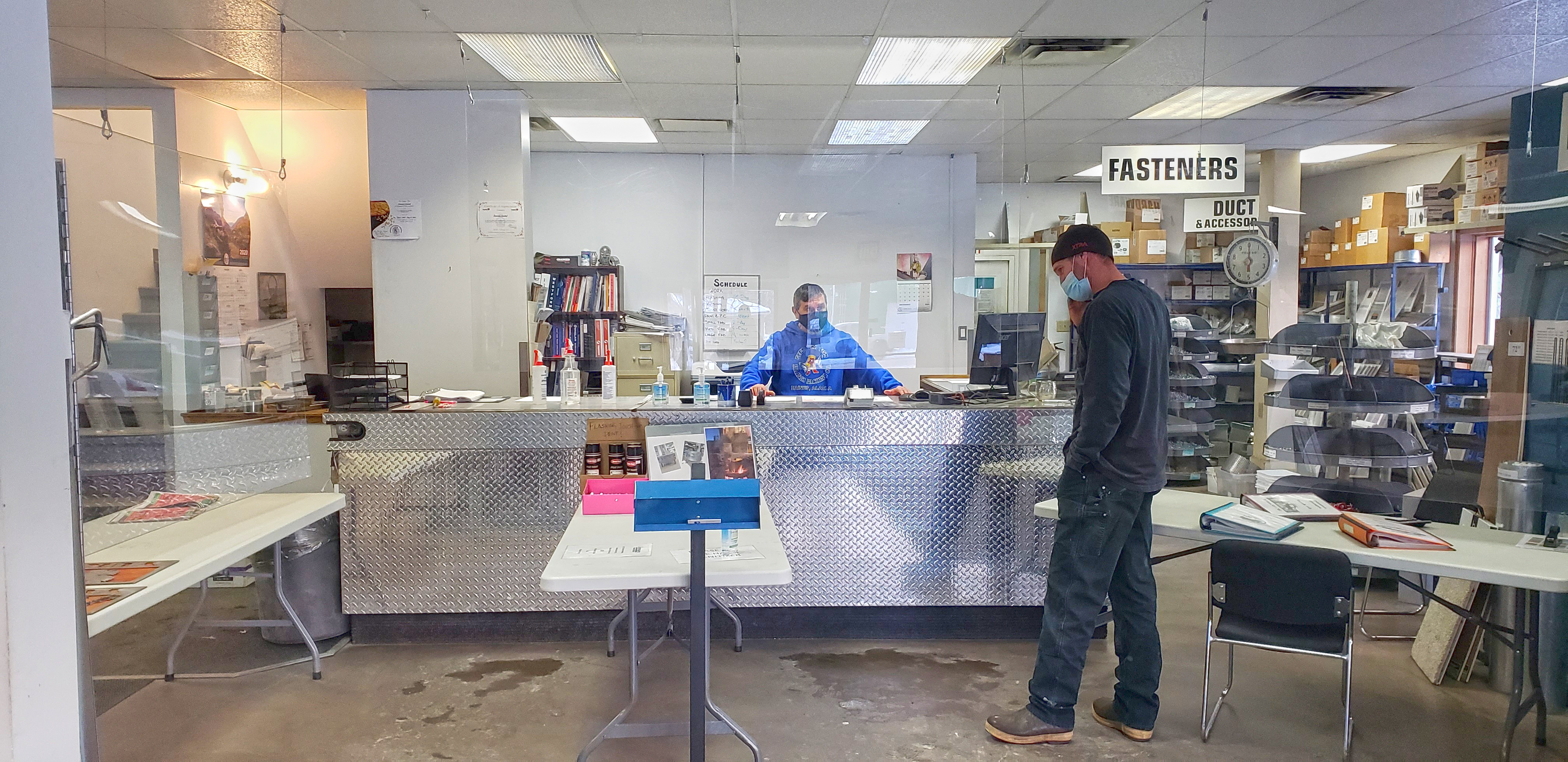
Duncan Limited in Canada’s Yukon Territory installed plexiglass safety shields throughout its facilities to help combat the spread of COVID-19.
At DILFO, workers have to complete questionnaires about their health status before they can access some job sites. Additionally, Dillon says they are required to wear face masks throughout the entire day and maintain a distance of two meters, or roughly six feet, from one another. Work sites have set up guidelines for foot traffic, too, to prevent people from becoming bottled up together in areas such as stairwells and elevators.
On the horizon
Despite the challenges created by COVID-19, sheet metal and HVAC contractors in Canada generally seem optimistic about what is to come in 2021. For starters, Canada appears to be bouncing back from the effects of the pandemic more quickly than the United States. Economic activity in the second half of 2020 has come back stronger north of the border, bolstered in part by better containment of the spread of the coronavirus.
Additionally, governments at all levels in Canada are emphasizing infrastructure investment to help bolster the economy. One federal initiative that was already in place prior to COVID-19 is the Investing in Canada Infrastructure Program, a $33 billion program focused on areas such as public transit and developing infrastructure in rural communities.
Dillon believes the changes forced by COVID-19 will have some lasting impacts on the sector in areas such as workplace safety. “I really think that some positives are coming out of this pandemic,” he says. For example, best practices for hygiene on job sites will likely tighten, according to Dillon. He also points out that communication and coordination have improved and shifted more focus to prefabrication: “Unorganized work doesn‘t work very well when you‘re in a pandemic.”
Bernie Antchak, principal with Northwest Sheet Metal Ltd., describes his outlook for the upcoming year as a “mixed bag.” He points out that the ongoing rollout of a vaccine for COVID-19 is lifting some spirits around the sector. Northwest Sheet Metal specializes in healthcare facilities, so Antchak feels confident work will remain steady for the company in the year to come.
“From a business perspective, you just got to hold fast and steer the ship,” says Antchak says.
But as the world starts to emerge from COVID-19’s shadow, Warner says Duncan’s plans to focus on the mental health of its employees. Recently, the company entered into an agreement with a counseling service to provide mental health assistance to employees and their immediate family members.
“We’re going to need support for all of our workers and all of their families because this is something nobody’s ever experienced,” Warner says. “Everyone can feel the financial burden and the burden of just dealing with such a high-stress situation.”
DILFO Mechanical [ON] »
Summit Sheet Metal [BC] »
Duncan’s Limited [YK] »
Crosstown Heating & Ventilating (Calgary) Ltd [AB] »
Northwest Sheet Metal Ltd [BC] »
Air Quality’s Effect on Spreading COVID-19
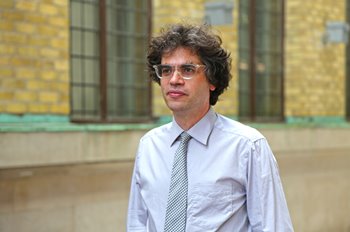
Jeffrey Siegel
Jeffrey Siegel is an engineering professor at the University of Toronto who studies ventilation and indoor air quality in commercial and residential buildings. He spoke with SMACNA about how focusing on air quality can help tamp down the spread of COVID-19.
SMACNA: Is there a link between indoor air quality and COVID-19?
Jeffrey Siegel: In many cases, we’re breathing in the SARS-CoV-2 virus, or otherwise coming in contact with it in the indoor environment. But it’s not like other things that we’re exposed to, in that a lot of what we worry about with indoor air are chronic health impacts.
SMACNA: What does that mean for fighting the spread of the SARS-CoV-2?
JS: There is a hierarchy of strategies we use to improve indoor air. We start with source control taking the virus out of the indoor space. Masks are a good example of how we use source control with SARS-CoV-2.
Once you’ve done everything you can with source control, usually you move next to ventilation. Based on everything we know from similar respiratory diseases, poor ventilation is an important risk factor.
Adding ventilation is always helpful, but adequate ventilation isn’t a solution by itself.
SMACNA: What are the next steps in mitigating risks?
JS: Next, we move to air cleaning and filtration, which is very building specific. Maybe there’s an air system of some kind, so we can install better filters. If not, we might look at something like portable filtration.
Filtration is very much like ventilation because it has to be done well. We have to make sure that that the air filter is installed properly. There has to be enough air going through it to make a difference. You also need to keep up with the filter maintenance; otherwise, it can actually be counterproductive. Every building, every context, is going to have a different set of factors that determine how well the filter works.
Lastly, there’s ultraviolet light, which has been shown to work on related microorganisms. Most people aren’t willing to invest what it takes to do UV well, so it’s usually not at the forefront of solutions that I recommend. But it should be in the mix, certainly.
It’s through this kind of layered approach of many solutions that we actually reduce the risk of spreading SARS-CoV-2
.
SMACNA: Are there longer-term benefits to making these investments now?
JS: Indoor air was important before this pandemic, and it will be important after this is gone. So why not invest in indoor air? The best thing that could happen is you reduce your transmission risk. The worst is that you improve indoor air. At the end of the day, you’re going to be left with a better building with better indoor air and all the benefits that accrue from that.
Editor’s Note: COVID-19 is a contagious respiratory illness caused by infection with a new coronavirus (called SARS-CoV-2), the virus that causes COVID-19. Source: CDC
